2024 Specialized Chisel
Wheel Size: 29”
Travel: 110 mm rear / 120 mm front
Geometry Highlights:
- Sizes Offered: XS, SM, MD, LG, XL
- Headtube Angle: 66.5° (Low)
- Reach: 445 mm (Size Medium, Low shock position)
- Chainstay Length: 438 mm
Frame Material: Aluminum
Price: Complete bikes starting at $2,600 USD
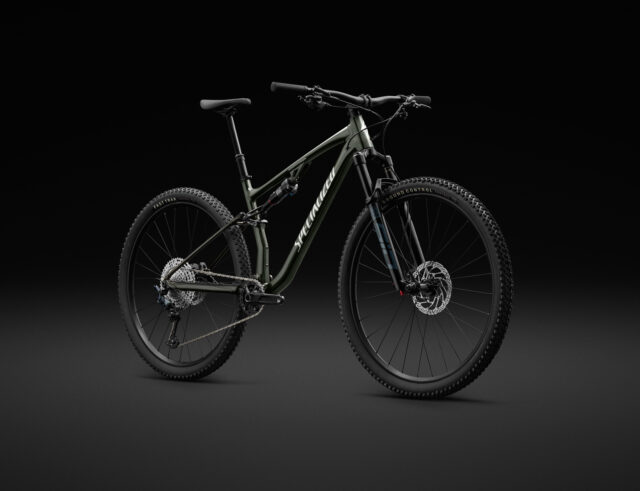
Intro
The recent release of the Epic 8 and Epic 8 EVO (Full Review coming soon) marked a new chapter in Specialized’s elite Cross Country bike designs, with longer travel and more aggressive angles than ever before. Our time on the Epic 8 EVO has left us impressed with the result, but those carbon fiber-framed bikes aren’t cheap.
The new Chisel is the answer for riders looking for Epic-inspired performance at a much more affordable price, and it brings some interesting construction techniques to the table to get there. Let’s dig into the details.
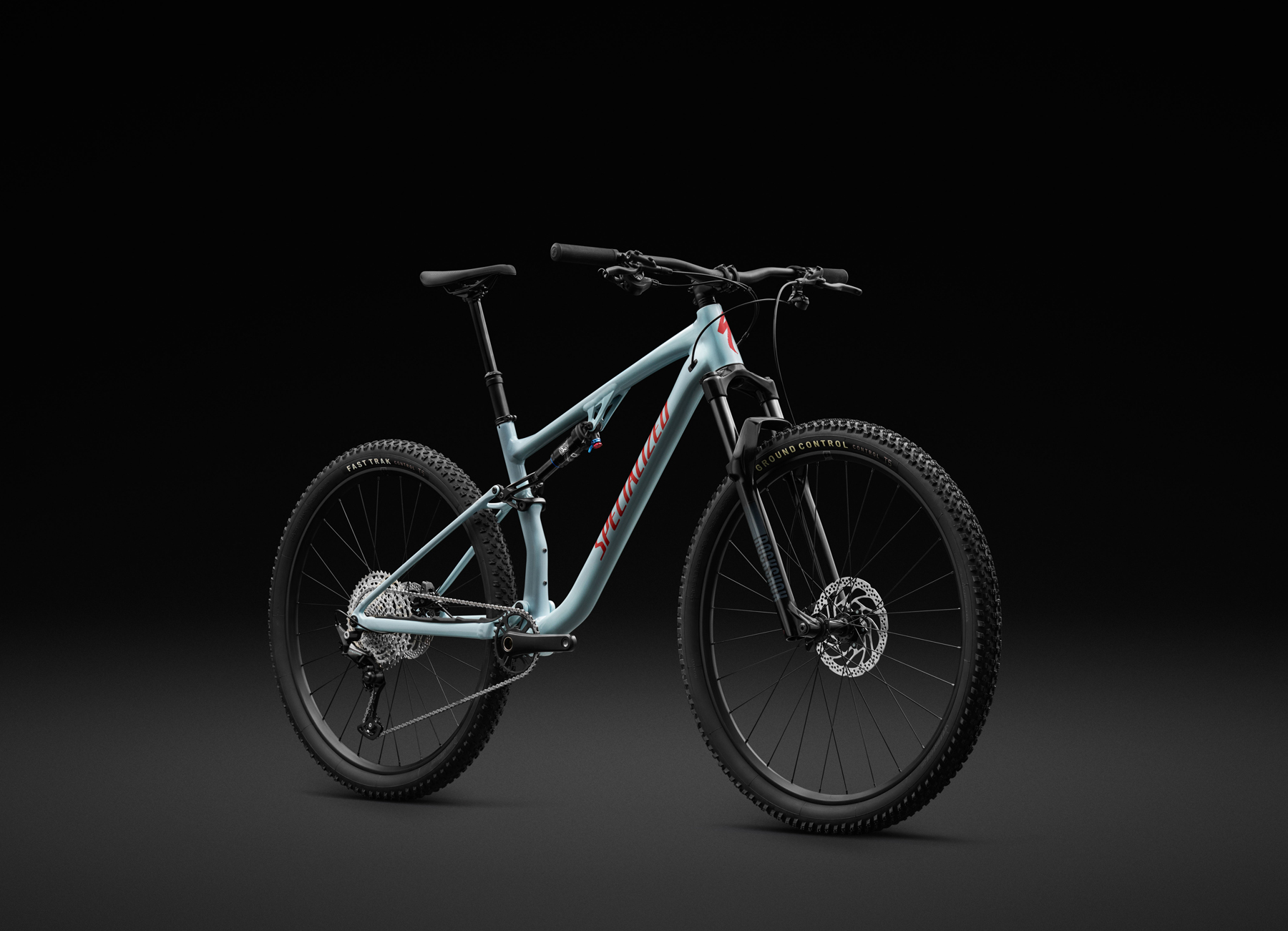
The Frame
Looking at the new Chisel, you could be forgiven for mistaking it for an Epic 8 from a distance. A combination of complex hydroformed tubes and Specialized’s futuristic-sounding D’Aluisio Smartweld technology make for carbon-esque frame shapes while also allegedly helping the Chisel hit a low weight target — 2,720 grams (~6 lbs) for the frameset to be more specific. Specialized claims that the Chisel’s weight makes it the lightest aluminum frame in its class, weighing 1,020 grams less than the Trek Top Fuel Alloy and 570 grams less than the Scott Spark Alloy.
While the Epic 8 got the bump to 120 mm of rear travel, the Chisel gets just a shade less at 110 mm of rear travel paired with a 120 mm travel fork. Specialized says that the kinematics are inspired by the updated Epic 8, but with traits that fall somewhere between the more race-oriented kinematics of the Epic 8 and prior generation Epic EVO. At this point, we don’t have kinematics graphs from Specialized showing exactly what that means in practice, but my best guess is that it means a slightly more forgiving rear suspension feel than the Epic 8, perhaps at the expense of some efficiency.
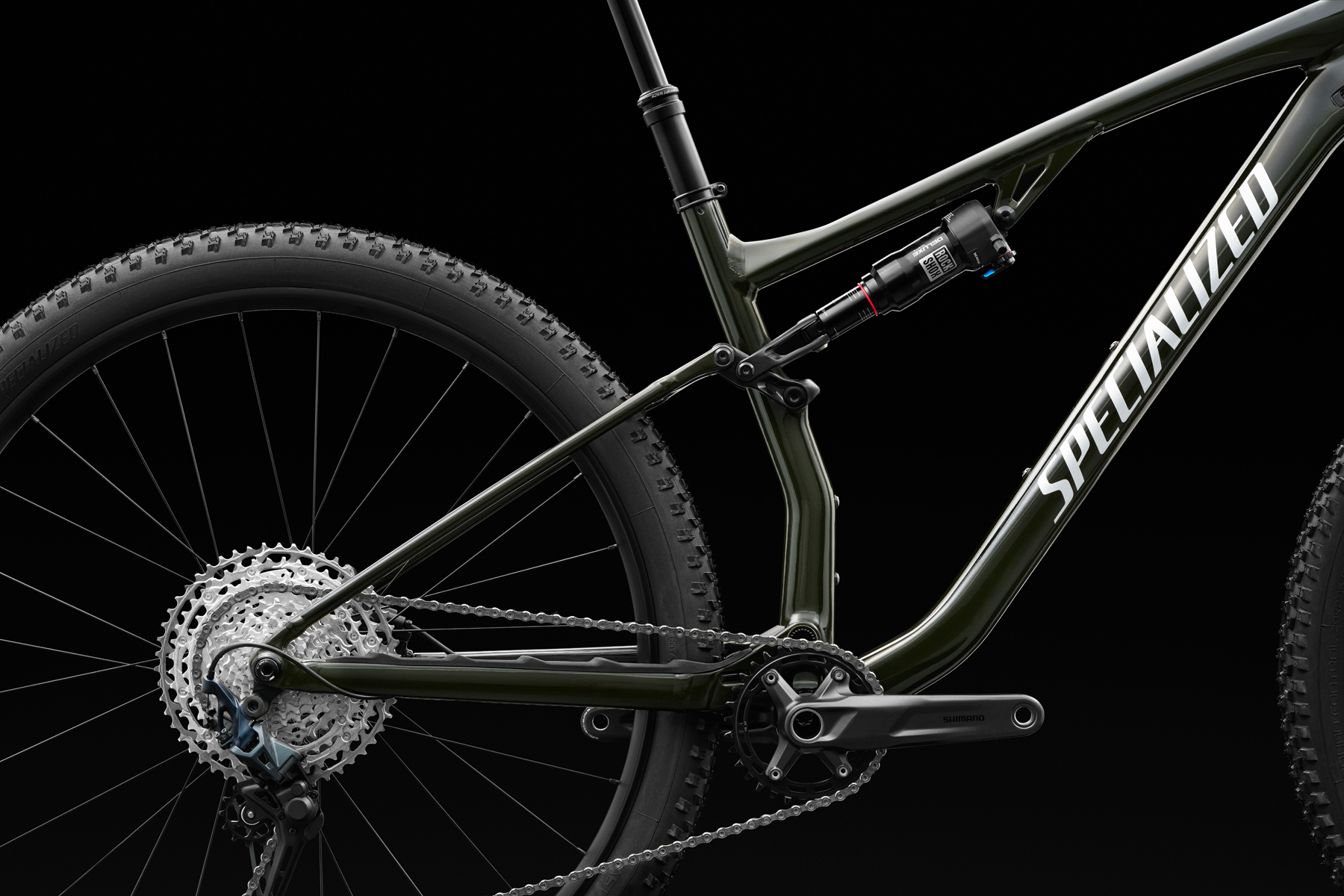
Despite using aluminum, Specialized has stuck with flex stays at the rear triangle to save weight and reduce complexity. That’s a bit surprising given that flex stays are typically only seen with carbon or steel construction, but Specialized claims that extensive testing has shown their aluminum construction method to hold up.
Otherwise, the frame uses internal routing (exiting at the top of the downtube, not through the headset — phew), has space for 2 water bottles, and uses the near-ubiquitous SRAM UDH hanger standard.
Fit & Geometry
Specialized says that the Chisel’s geometry is inspired by the new Epic 8, but the numbers themselves appear to be a bit more conservative than the Epic. Like the Epic 8, the Chisel also gets a flip chip at the lower shock mount allowing geometry alteration between Low and High settings.
The size Medium Chisel gets a 445 mm reach, 438 mm chainstays, 336 mm bottom bracket height, and 66.5° headtube angle in the Low position — for comparison, the Epic 8 (non-EVO) gets a 65.9° headtube angle in Low along with a 450 mm reach and 326 mm bottom bracket height. Specialized oddly does not list the headtube angle measurement for the Chisel’s High position, but given that the bottom bracket jumps up by 6 mm (a similar step to the flip chip’s effect on the Epic 8), that should push the head angle measurement into the mid-67° realm.
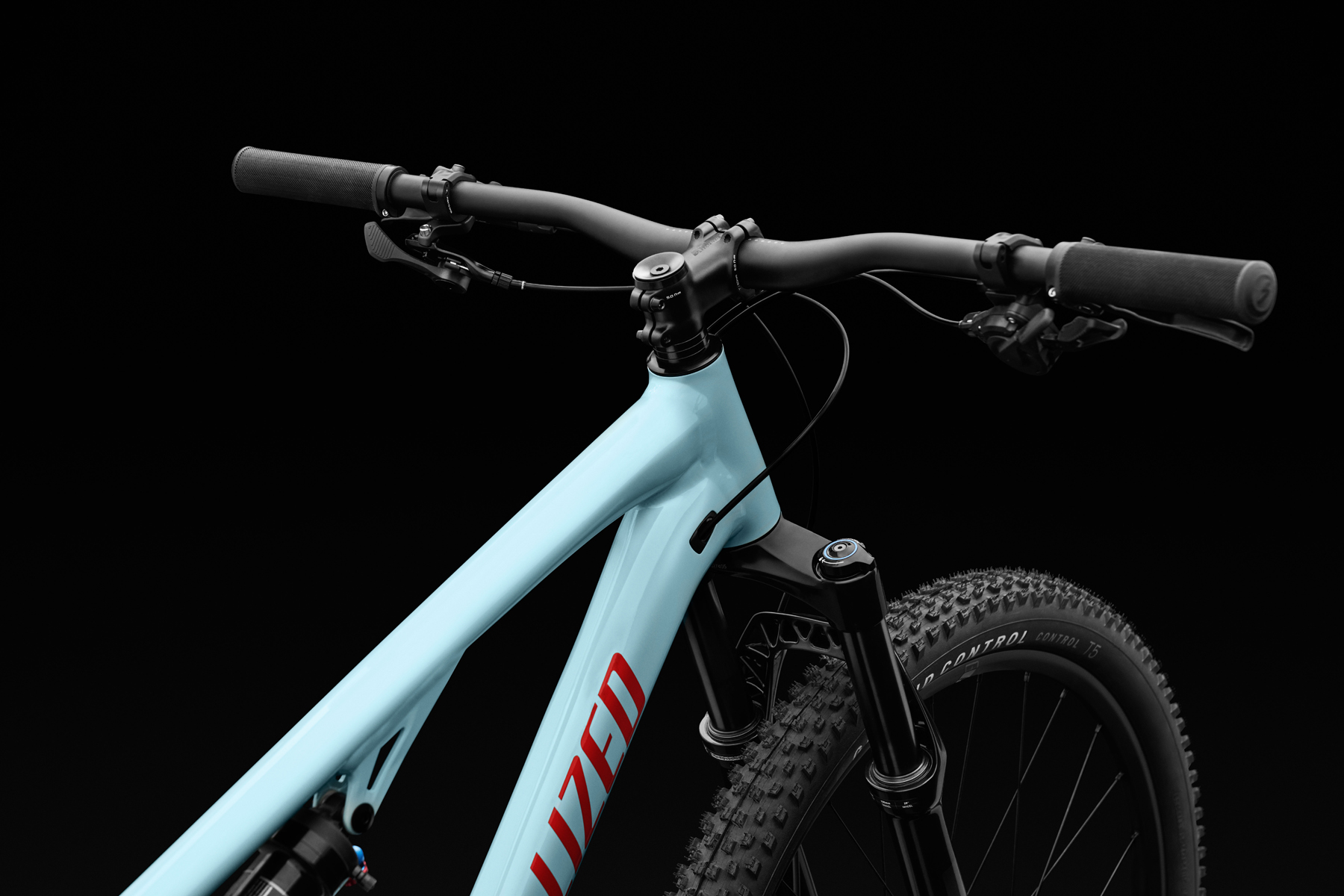
One area that may bode well for folks coming from a more Trail or Enduro background is the higher stack measurement on the Chisel. Where the Epic 8 gets a low 598 mm stack in size Medium, the equivalently sized Chisel jumps to 606 mm. It’s not a huge difference, but enough to give a more upright riding position that should be a bit more comfortable and confidence-inspiring off of the race course.
Full geometry specs are included below:
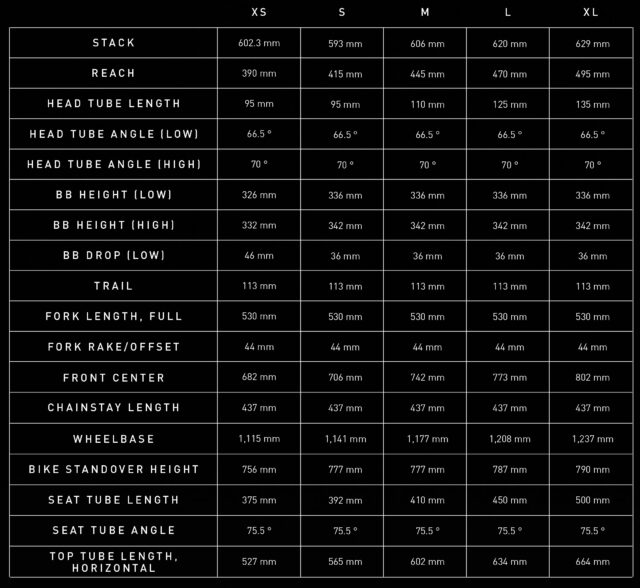
The Builds
As a more budget-oriented option, it’s unsurprising to see the Chisel getting a parts spec that prioritizes value over top-end race performance. It’s available as a frameset with a RockShox Deluxe Select+ shock and pretty sweet-looking pink metallic paint, or in three spec levels with more muted colors. All complete bikes get dropper posts along with RockShox suspension front and rear.
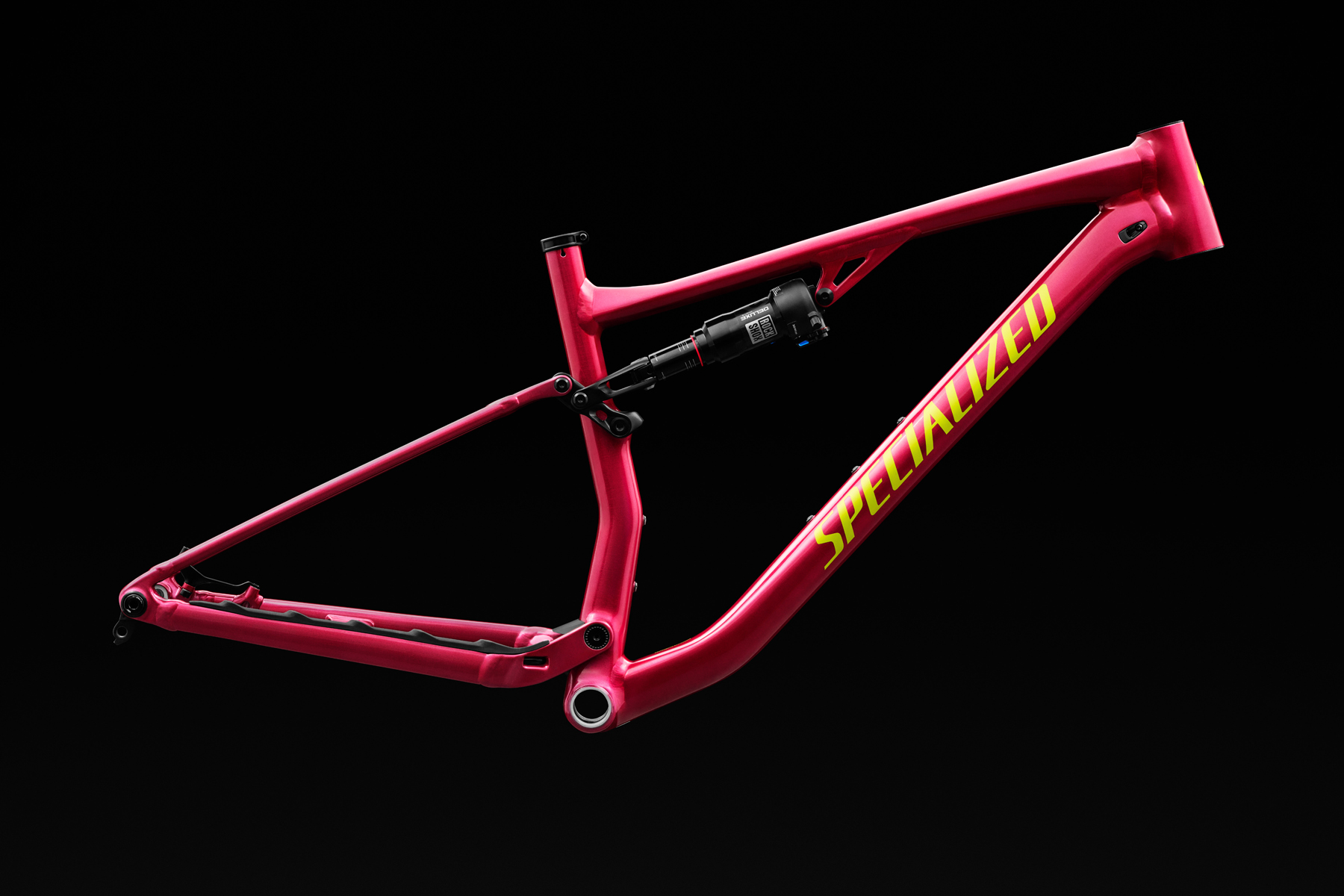
Interestingly, Specialized has opted to give riders a choice between Shimano and SRAM drivetrains at the same entry-level $2,600 price point. The slightly higher-spec Chisel Shimano Comp build does not have a SRAM-equipped counterpart.
Highlights from each model’s available builds are as follows:
- Drivetrain: SRAM SX / NX Eagle
- Brakes: SRAM Level T
- Fork: RockShox Recon Silver RL (120 mm)
- Shock: X-Fusion PRO-O2
- Wheels: Specialized Alloy 29 rims w/ sealed cartridge bearing hubs
- Dropper Post: TranzX (XS–S: 100 mm; M: 125 mm; L–XL: 150 mm)
- Drivetrain: Shimano Deore
- Brakes: Shimano M4100
- Fork: RockShox Recon Silver RL (120 mm)
- Shock: X-Fusion PRO-O2
- Wheels: Specialized Alloy 29 rims w/ Shimano MT410 Centerlock hubs
- Dropper Post: TranzX (XS–S: 100 mm; M: 125 mm; L–XL: 150 mm)
- Drivetrain: Shimano Deore / SLX
- Brakes: Shimano M6100
- Fork: RockShox SID (120 mm)
- Shock: RockShox Deluxe Select +
- Wheels: Specialized Alloy 29 rims w/ Shimano MT410 Centerlock hubs
- Dropper Post: TranzX (XS–S: 100 mm; M: 125 mm; L–XL: 150 mm)
Those complete builds strike a compelling price point to be sure, and also present a nice starting point for folks to make some upgrades down the line. I would be highly tempted to pony up for the Chisel Shimano Comp at the $800 upcharge given the meaningfully upgraded brakes and suspension, but at the base level, I would still stick with Shimano given that I’ve found the performance of the Deore drivetrain to nearly equal Shimano’s higher-spec drivetrains. I can’t say the same for the SRAM build; the Level brakes and NX / SX drivetrains have historically left a lot to be desired.
The frameset option comes at an asking price of $2,000 USD, which is a solid value but likely can’t touch the complete bikes’ bang-for-buck unless you’ve already got a garage full of spare parts to hang on it.
Some Questions / Things We’re Curious About
(1) How similar (or not) are the Chisel and Epic 8 on trail? None of their individual differences look to be huge on paper, but enough little tweaks can add up to very differing feeling bikes at the end of the day, so we’re curious to find out.
(2) And with the recent resurgence in Cross Country racing, will we see more brands following Specialized’s lead and offering more affordable aluminum-framed options?
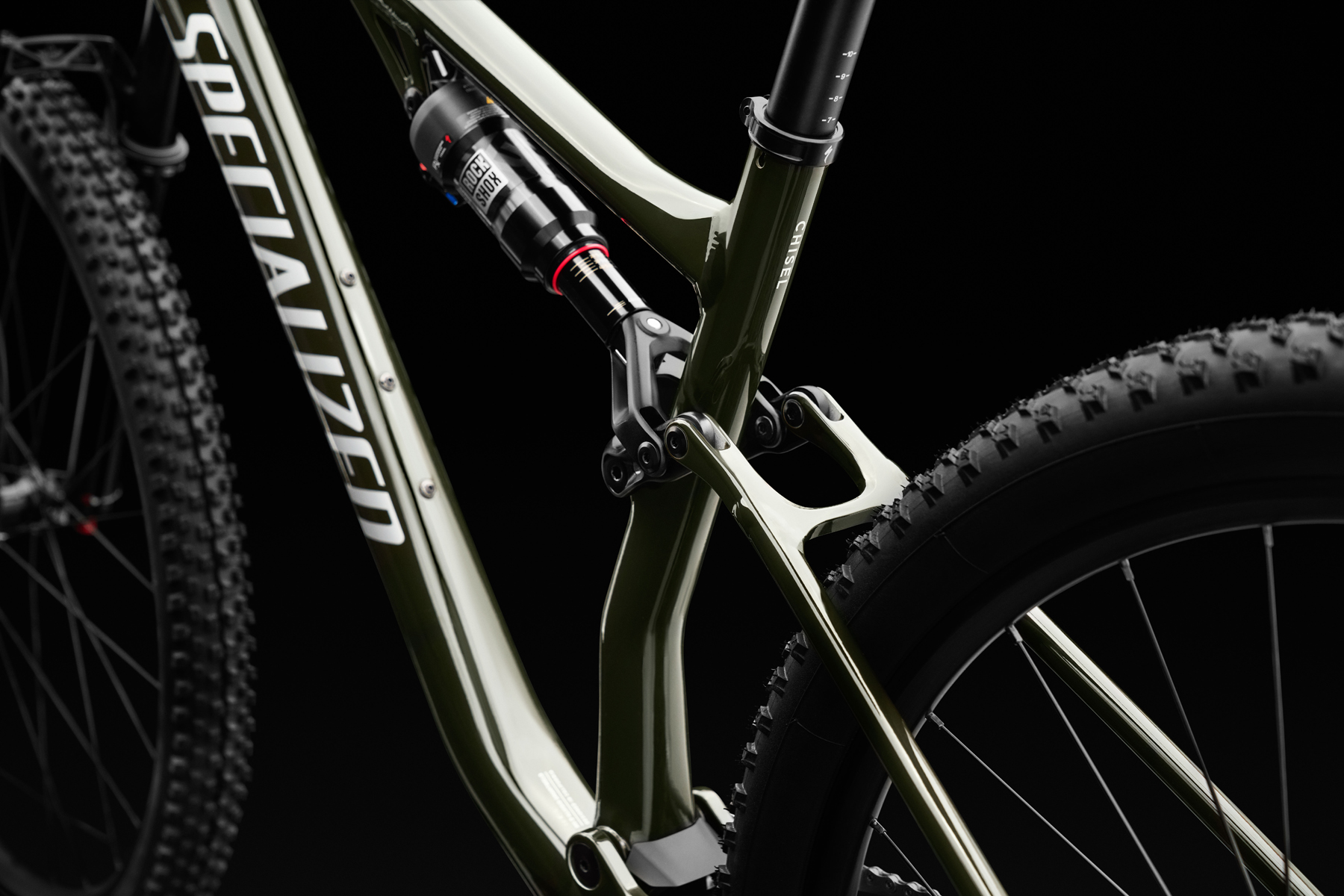
Bottom Line (For Now)
Cross Country is having a bit of a moment right now, and it’s great to see some of the innovations in geometry and design trickling down through the ranks of less expensive bikes. Specialized appears to have done just that with the Chisel, bringing a lot of advanced aluminum construction methods to what otherwise seems positioned as an entry-level Cross Country bike.
With geometry close to that of the Epic 8, the Chisel seems appealing as a budget entry into the world of Cross Country, with a frame that could justify some higher-end upgrades down the line for an emerging Cross Country rider. We’d love to get some time on one to see how it compares to the Epic 8 platform and will report back when and if we do.

was there ever a comparison to the Epic posted? I’d be very interested in the deeper dive on those as well as the Santa Cruz Blur. Thanks!